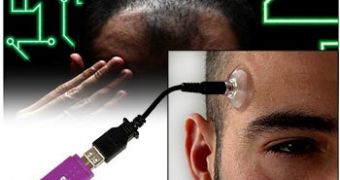You would like to get rid of shameful or traumatic memories. But memories are solid casts stuck deep in our brains and when we recall, the models release more mobile molecules. Still, even if memories cannot be erased so easily, an American team has found that there are brain nuclei involved in suppressing unpleasant memories, a discovery with implications in treating depression or post traumatic stress disorder.
Brain scans revealed to neuroscientists that volunteers who have been put to banish disturbing memories revealed very specific patterns of brain activity. Two zones in the prefrontal cortex, the place of cognitive control, seem to function in tandem to control posterior brain areas like the visual cortex, the hippocampus and amygdala. These brain parts had been connected to visual recall, memory encoding and retrieval and emotional expression.
"These results indicate memory suppression does occur, and, at least in nonpsychiatric populations, is under the control of the prefrontal cortex," wrote the researchers.
The 16 subjects were given 40 pairs of photographs to watch, and in each case, an image of a neutral human face was paired with an emotionally disturbing picture like a car crash, a wounded soldier, an electric chair or a violent crime scene. After memorizing each pair, the subjects were placed in an fMRI (functional magnetic resonance imaging) scanner. Following this, they were shown just the neutral face images and asked to either actively recall the linked disturbing image or to actively shut it off. The scanner revealed that the subjects could "exert some control over their emotional memories. By essentially shutting down specific portions of the brain, they were able to stop the retrieval process of particular memories," said lead author Brendan Depue, a doctoral student in neuroscience at the University of Colorado at Boulder
This research could lead to better therapies and even drug treatments for people affected by post-traumatic stress disorder, phobias and obsessive-compulsive syndrome, in which patients experience intrusive and obsessive flashbacks of disturbing memories.
"The first step is to understand how memory suppression works in healthy individuals, and what neural mechanisms are at work. Then you need to look at those same mechanisms in a clinical population and figure out why they aren't functioning properly," said Depue.

 14 DAY TRIAL //
14 DAY TRIAL //